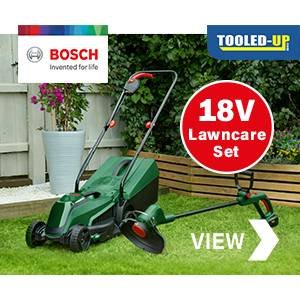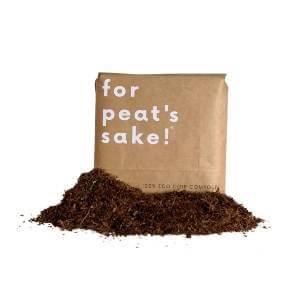Introduction
Welcome to the ultimate guide on how to grow mouthwatering cherries right in your own backyard in the UK. Whether you have a spacious garden or a small balcony, this step-by-step guide will help you successfully cultivate your own cherry trees and enjoy the sweet rewards of your efforts.
Why Should I Grow Cherries?
Growing cherries at home offers a multitude of benefits. Not only do you get to experience the joy of watching your trees blossom and bear fruit, but you also have the satisfaction of knowing exactly where your cherries come from. Homegrown cherries are free from harmful pesticides and chemicals, making them a healthier choice for you and your family.
Where is the Ideal Location to Grow Cherries?
Cherries thrive in areas with a temperate climate, and the UK provides the perfect conditions for their growth. Choose a sunny spot in your garden or balcony that receives at least six hours of direct sunlight each day. Cherries also prefer sheltered areas to protect them from strong winds that can damage the delicate blossoms.
Soil Type and Preparing the Soil
Cherries prefer well-drained soil with a pH level between 6.0 and 7.0. Before planting, prepare the soil by removing any weeds and adding organic matter such as compost or well-rotted manure. This will improve the soil’s fertility and drainage, creating a favorable environment for your cherry trees to thrive.
Watering Tips and Hints
Cherries require regular watering, especially during dry spells. Water deeply, allowing the soil to soak up the moisture, but be careful not to overwater as this can lead to root rot. Mulching around the base of the tree will help retain moisture and suppress weed growth, ensuring your cherry trees stay hydrated and healthy.
Sowing and Planting Cherries
If you prefer to start from scratch, you can grow cherries from seed. Collect cherry pits from ripe cherries and soak them in water for 24 hours to soften the outer shell. Plant the seeds in pots filled with well-draining soil and keep them in a cool, dark place for several months to simulate winter dormancy. Once the seeds have sprouted, transfer them to larger pots or plant them directly in the ground.
How to Plant Out Cherries
When your cherry seedlings are about one year old and have developed a strong root system, it’s time to plant them out in their permanent location. Dig a hole twice as wide and deep as the root ball, gently place the seedling in the hole, and backfill with soil. Ensure the tree is planted at the same depth it was in the pot, and water thoroughly.
General Care for Cherries
Regular pruning is essential for cherry trees to maintain their shape and encourage optimal fruit production. Prune during the dormant season, removing any dead, damaged, or crossing branches. Applying a balanced fertilizer in early spring will provide the necessary nutrients for healthy growth. Protect your cherry trees from birds by using netting or reflective tape.
How to Harvest Cherries
Cherries are ready for harvest when they are fully ripe and have developed their characteristic color. Gently twist the cherries from the stem, being careful not to damage the fruit or the tree. Enjoy them fresh or use them in a variety of delicious recipes.
How to Store Cherries
If you have an abundance of cherries, you can store them in the refrigerator for up to a week. To extend their shelf life, you can also freeze cherries by removing the pits and placing them in airtight containers or freezer bags.
Problems in Growing Cherries
Cherries are susceptible to various pests and diseases, including aphids, birds, and fungal infections. Regularly inspect your trees for signs of damage or infestation. Applying organic pest control methods and maintaining good hygiene practices can help prevent and manage these issues.
Where to Buy Cherries
If you prefer to skip the growing process, you can purchase cherry trees from reputable nurseries or online garden centers. Choose healthy, disease-resistant varieties that are suitable for your specific climate and growing conditions.
What are the Best Cherry Varieties to Grow and Why?
There are numerous cherry varieties to choose from, each with its own unique flavor and characteristics. Some popular varieties for UK gardens include Stella, Morello, and Lapins. Consider factors such as taste, self-fertility, and disease resistance when selecting the best cherry variety for your home garden.
What Tools Will I Need to Grow Cherries?
For successful cherry cultivation, you’ll need a few essential tools. These include a spade or shovel for planting, pruning shears for maintaining tree health, a watering can or hose for irrigation, and a net or reflective tape to protect against birds.
Conclusion
Growing cherries at home in the UK is a rewarding experience that allows you to enjoy the delicious taste of freshly picked fruit. By following these step-by-step instructions and providing the right care, you can create a thriving cherry orchard in your own backyard. So, grab your gardening tools and get ready to savor the sweetness of homegrown cherries!
Frequently Asked Questions
Q: Can I grow cherries in pots?
A: Yes, cherries can be grown in pots as long as you choose a dwarf or patio variety and provide proper care and maintenance.
Q: How long does it take for cherry trees to bear fruit?
A: Cherry trees typically start bearing fruit after three to five years, depending on the variety and growing conditions.
Q: Do cherry trees require cross-pollination?
A: Some cherry varieties are self-fertile, meaning they can produce fruit without cross-pollination. However, cross-pollination by another compatible variety often results in better fruit set and quality.
Q: Can I grow cherries from cuttings?
A: While it is possible to propagate cherry trees from cuttings, it is a more challenging and less reliable method compared to growing from seeds or purchasing young trees.
Keywords: growing cherries, growing cherries uk, growing cherries from seed, climate for growing cherries, growing cherries from seed uk, what do growing cherries look like, growing cherries at home, growing cherries in pots




































